Greetings once again. Here we are: the last volume in our effects discussion. Take that last sentence with a huge grain of salt, since we both know by now that this “effects” topic is one that can easily fill up a large library!
However, if you’ve been following along with the series I feel confident that you have now developed a working knowledge of all of the “must know” basics concerning the effects we have tackled. You are at a point now where you can take this knowledge as far and deep as you want to.
Keeping with that spirit we will have one more discussion that will round out your “required” effects knowledge.
Let’s get to it.
What are “Modulation” Effects?
There are many ways to describe modulation effects, and there are even more effects that can be included in this category. So as always, the question that begs for an answer is this:
What is the main characteristic that encompasses modulation effects?
In a nutshell, any effect that keeps the original (‘dry’) signal, and then duplicates or mimics that signal with any particular alteration to it, is a modulation effect. The name itself tells exactly what the effect does – ‘modulate’ means to adjust or adapt, and modulation effects make some particular kind of continual adjustment to the original signal.
There are an endless variety of modulation effects, so we’ll stick to the most popular ones. We’re going to cover rotary speakers, chorus, flanger and phaser effects this week, and tremolo, vibrato, pitch shift and wah-wah effects in our next installment. (Remember you can subscribe to new articles to make sure you won’t miss it.)
Now let’s get some semantic arguments out of the way. Yes, technically speaking, delays and echo effects would fall under the modulation category as well since the definition fits them. And in fact using very short delay times can produce effects such as chorusing and flanging – since (as you’ll soon learn) they are based on a varying delay effect!
However, we draw the distinction between delays and modulation effects primarily due to application:
- Delays are used specifically to produce distinct repeats in the output signal.
- Modulation effects do not feature distinct repeats, (as their delay time is too short) but rather feature the blend of dry vs. altered (or modulated) signal, and the resulting combined sound.
As different as all of the modulation effects we’ll look at are they do share the common characteristic above: blending of the original and modulated signal. As always, there are a few exceptions to this, and these will be duly noted as we go.
So let’s just dive right in, and I’ll fill you in on the relevant history of each effect as we get to it!
Rotary/Leslie speaker effects
The “Rotary speaker” or “Leslie speaker” effect is a good place for us to start, since many popular modulation effects stem from here.
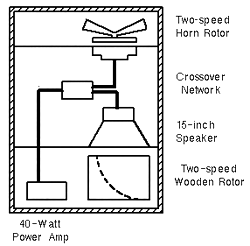 The “Leslie” speaker cabinet (named for inventor Donald Leslie) was designed primarily to be used by organ players to simulate the natural “chorus” of old pipe organs. We’ll talk more about chorus effects below, but for now: A chorus effect (in the simplest definition) is produced when multiple similar sounds (or ‘voices’) are produced simultaneously – with the natural and slight differences in tuning and timing adding to the thickening and grandness of the sound.
The “Leslie” speaker cabinet (named for inventor Donald Leslie) was designed primarily to be used by organ players to simulate the natural “chorus” of old pipe organs. We’ll talk more about chorus effects below, but for now: A chorus effect (in the simplest definition) is produced when multiple similar sounds (or ‘voices’) are produced simultaneously – with the natural and slight differences in tuning and timing adding to the thickening and grandness of the sound.
The artificial chorus effect is the electronic solution to the sometimes inconvenient (or unachievable) natural occurrence of voices or instruments performing in chorus. Leslie speakers consisted of a low frequency speaker, and a high frequency horn placed in the same speaker enclosure, separated and acoustically shielded from one another, and finally mounted on individual motors. The speakers were then able to be rotated at variable speeds independent of each other.
The result? A complicated sound consisting of many audio phenomena, such as: Doppler effects, vibrato, tremolo, and phase shifting… Let’s listen to an example. Original audio first, then with the effect applied:
Demonstrations of the Doppler effectThe “Doppler” effect (varying the pitch based on the speed of moving towards and away from the sound source) will be familiar to you from ambulance sirens zooming past in the street! Leslie speakers use the same phenomenon, but on a smaller scale, and combined with the tremolo (more later) effect of the speaker pointing towards and away from you and the other effects mentioned above – all of which we’ll discuss shortly.
To this day, the richness of Leslie speakers has yet to be matched; but in the never-ending quest to simulate the effect that itself simulates natural chorusing, many important effects were introduced that have become giants in their own right.
A few examples of rotary speaker simulators are early Uni-Vibes, phaser effects, and chorus effects. As usual, all are available as compact pedal, rackmount, and software versions.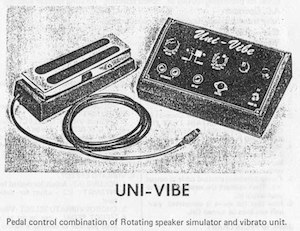 I will go on record and say that rotary speaker simulations are getting better and better all the time; however, the one thing missing is the physical sensation of the sound moving around you. Those who have experienced a real Leslie know what I mean!
I will go on record and say that rotary speaker simulations are getting better and better all the time; however, the one thing missing is the physical sensation of the sound moving around you. Those who have experienced a real Leslie know what I mean!
And if you didn’t already know this, we guitar players jumped fully onto the turf originally occupied by keyboard players and put our paw prints all over this very evocative effect! A bunch of no good miscreants aren’t we?
Chorus and stereo chorus effects
Chorus (and stereo chorus) effects were spawned while trying to electronically simulate the Leslie effect.
Arguably the Roland/Boss Corporation were the biggest proponents in the popularity of this effect, with the classic CE-1, and Roland Jazz Chorus 120 amplifier which consisted of a true stereo amplifier with this chorus built in. All of a sudden the chorus or “multi-voice sound” was available to guitar players, or actually, anyone who plugged into one. But I’m getting ahead of myself!
Here’s the juice on the chorus effects.
As we said before, chorusing is achieved naturally when you have more that one similar sound source sounding at once. A choir is a great example. The natural discrepancies in pitch and timing are what produce that characteristic sound and let you know you’re listening to a group of singers, not a single person.

This is actually a case where an “out of tune” audio signal is crucial to its success! This actually holds true to some degree for most of the modulation effects we’ll discuss.
If we take the above statements and apply them in electronic terms, here is what we get:
The dry (original) signal passes through the effect unit, which duplicates it and varies the duplicate slightly in pitch and playback speed.
If this altered signal is heard by itself, the result is a slightly warbling, out-of-tune sound. But when it is blended back in with the dry signal, the result is a rich sound that has all the elements of a multi-voiced source: (original first, then with chorus)
Standard controls are:
- The depth control adjusts the amount of chorus effect applied.
- The width control sets the size of the chorusing is set by the width control.
- The speed control sets how rapidly the “wet” signal is modulated (varied).
- The mix control sets the balance between original (dry) and altered (wet) signal in the output.
Chorus effects can be either mono or stereo. Both have a rich full sound, but when processed in stereo and spread across a stereo sound field (2 amps, 2 speakers, etc.) the mammoth size of the chorus sound is hard to ignore, and can be a highly addictive effect!
Misc. note: Wisdom and restraint are required when recording chorused sounds (especially stereo) since it’s the difference and contrast of all sounds present that gives us the impression of stereo imaging or depth perception – not necessarily the (over)use and “stereo chorusing” of each sound! I know this belongs more in a recording/production tutorial, but I thought you should at least be aware this tidbit.
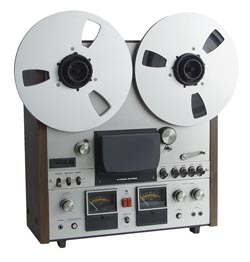
Flanger effects
Remember our discussion on echo effects, when I specifically mentioned an old school technique of tapping a tape flange to cause it to momentarily de-sync with its partner tape player? The 2 tape players playing the same input material and feeding a combined output signal would produce an echo repeat when one was disrupted (speed wise) by a small tap on the tape reel. The rim of the reel also being called its “flange”.
Well, what would happen if you applied small finger pressure continuously on one of those flanges, causing it to constantly be out of sync with the other “normal” tape player? You get the “flanger” effect, named for the tape reel vital to the original production method.
George Martin, producer of the Beatles, is generally credited with the invention of this effect. (Rumor has it that one of the members of the Beatles tended to refer to any studio effect they used as “flanging”!)
Whatever the truth may be, one thing is for sure: the characteristic sound of a flanger!
I know you have all heard it. It is commonly described as the sound of a jet taking off. Need examples? How about Heart’s intro to the song “Barracuda”![]()
![]()
![]()
![]() . Or, how about the opening riff to Van Halen’s “Unchained”
. Or, how about the opening riff to Van Halen’s “Unchained”![]()
![]()
![]()
![]() . Those are some dramatic examples of that “jet sound”!
. Those are some dramatic examples of that “jet sound”!
Here’s a more subtle example:
So what is the basic process of a flanger?
A flanger is basically identical to a chorus, both in concept and electronic function. What differs is the speed, and the feedback of the wet signal.
The speed of a flanger is much slower than that of a chorus. Here, the out of tune signal varies in pitch (or ‘frequency’… see how everything comes back to frequencies?) and amplitude, causing an independent wave that gets further from and then closer to the dry signal – to the point of crossing through the dry signal and repeating this process on the negative side of the sound wave. Think of it as a dry signal wave and a wet signal wave out of sync and intersecting each other (if you can imagine that!) much like the real-world example of two tape players. Throw in an equivalent of the finger pressure on the tape flange not being consistent (adding a continual variation) and you have it. The electronic version simulates that ever-changing finger pressure.
The other and more dramatic difference between a flanger and chorus effect is the feedback.
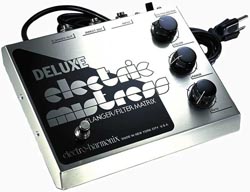 The feedback (also called regeneration) control on a flanger takes a portion of the output signal and literally feeds it back to the input for re-processing. This strongly impacts how much “jet sound” you get in the output.
The feedback (also called regeneration) control on a flanger takes a portion of the output signal and literally feeds it back to the input for re-processing. This strongly impacts how much “jet sound” you get in the output.
The controls of a flanger are basically the same as a chorus, including width, depth, and mix. It’s the slower, more dramatic wet signal coupled with feedback control gives flangers their unmistakable sound. Like choruses, flangers also come in mono and stereo versions.
As a matter of fact, let’s just say this right here: almost any effect produced today has mono, stereo – and even multi-channel versions!
Some classic examples of flangers are Electro Harmonix’s Electric Mistress and the mighty Boss BF-2!
Phase shift effects
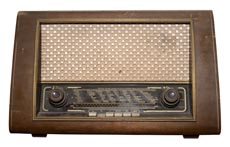 Phase shifting can be credited to the late great Les Paul. Is there anything he didn’t invent?
Phase shifting can be credited to the late great Les Paul. Is there anything he didn’t invent?
The story goes that he found the sound of radio stations from far away fading in and out fascinating. The actual science is that the fading out was caused by the audio signal reversing its phase. In simple terms relevant to us:
Phasing is caused when a signal wave is split in two, with one side remaining unaltered and the other played at particular measured points, causing the two intersecting sections to partially cancel each other out.
The result is a “swooshing” sound that fades in and out. This is what Les latched onto. Now, using electronics to create a cyclical and repetitive pattern, and the ability to vary the number of phasing peaks and valleys present, the “phaser” or “phase shifter” effect was produced.
A phaser is characterized as being harder and more pronounced than a chorus, but gentler than (and not as dramatic as) the ‘jet’ sound of a flanger. Let’s hear some examples – first clean, then with a phase shift effect applied:
The swooshing sound of a phaser can be controlled with the same controls as found on a flanger.
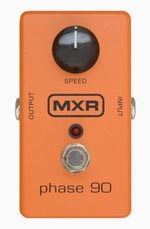 As a matter of fact, phaser effects became one of the first effects to simulate the rotary speaker sound, due to the in- and out-of-phase artifacts which were the closest match to a Leslie speaker’s Doppler sound. Keyboard players jumped on these effects – as did anyone performing anything with the word “funk” in it! Like platform shoes, and lava lamps, phase shifters were all the rage in all things funk; especially in the ‘70s. Virtuoso fusion musicians also latched onto the thick swish of the phaser!
As a matter of fact, phaser effects became one of the first effects to simulate the rotary speaker sound, due to the in- and out-of-phase artifacts which were the closest match to a Leslie speaker’s Doppler sound. Keyboard players jumped on these effects – as did anyone performing anything with the word “funk” in it! Like platform shoes, and lava lamps, phase shifters were all the rage in all things funk; especially in the ‘70s. Virtuoso fusion musicians also latched onto the thick swish of the phaser!
Great examples of phase shifters were the classic MXR Phase 90 and the Electro Harmonix Small Stone.
One of the most famous variations on phase shifting came in the form of the Uni-vibe, mentioned earlier. This was marketed as a “chorus” effect, but was, in all actuality, a phase shifter. The unique throbbing helicopter sounds this box produced were key ingredients in some classic tracks produced the ‘60s and ‘70s. Listen to:
for THE archetypal sounds of the Uni-Vibe.
Electronically there is a huge difference in how a Uni-Vibe worked, but the relevant thing is that it too is a kind of phase shifter. Let’s hear a couple more examples- with and without an extra effect: distortion.
A last word on phase shifters: Far from being a dated effect, phase shifting is enjoying a huge resurgence, especially with retro-minded music being produced – along with all the other modern sonic adventurers!
HOMEWORK
Remember the assignment given for the “delay/echo/reverb” effects? Let me remind you:
Listen and absorb the different types of delays and reverbs demonstrated. Simple enough.
However, I’m not letting you off the hook entirely! There is a condition to this homework-less “non-assignment”:
Your part of the deal is to experiment. Plug things into delays and reverbs. Plug distortions into delays, delays into distortions, reverbs into delays, delays into reverbs… and on and on and on.
Apply the same process here, for modulation effects! My main concern is for you to learn to recognize the basic characteristics of these effects. The only way to do that is to listen.
Listen over and over!
The audio clips were once again recorded by yours truly, and represent the basic forms of the effects we discussed. These are the building blocks; learn to recognize these – and you’re 99.99% of the way there.
Enjoy!
Any thoughts to share on these effects? Favourite tracks which use (or abuse) them? Speak your mind in the comments below.
Next time: Even more modulation effects! Tremolo, vibrato, pitch shift… and that unmistakeable wah-wah.

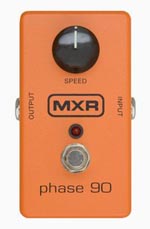







Really well explained !
Thank you
Nice tutorial! for an easier explanation about modulation checkout Modulation: Phasers, Flangers and Chorus
Great demonstration. Is use the phase 90.